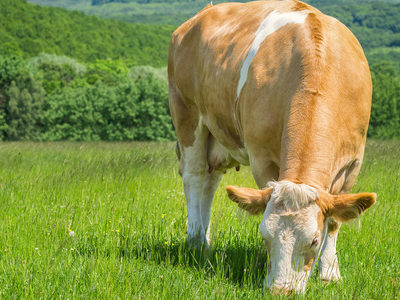What do a teenage girl with IBS and a world-renowned animal welfare expert have in common?
Apparently, beef-sticks.
You see, when Autumn and Chas Smith got married and were dealing with Autumn’s lifelong digestive issues, they discovered that sticking to the paleo diet almost completely eradicated her symptoms.
So they kept strengthening their understanding of nutritional deficiencies, especially in paleo food, until they came to one unsettling conclusion…
Not many products existed to meet their needs, and definitely not of the grab-and-snack variety.
All of the available products on the market that were free of gluten, GMOs, dairy, soy, and corn were also free of nutrients: minerals, vitamins, and antioxidants.
What’s the use of that? Do no harm, yes, but… Your food is supposed to do you good.
Thus Paleovalley was born.
When they were building out their healthy products, they knew they wanted to hit a few markers.
Not only did the products have to be free of harmful additives and internal irritants, they had to be densely packed with all of the life-supporting elements they found missing in the mainstream market.
But the road to treating our bodies well begins with treating all bodies well, especially those that nourish ours.
Why 100% Grass-Fed Beef is Critical
Palleovalley found suppliers using Temple Grandin’s revolutionary animal-handling techniques as well as facility designs for the humane treatment of their 100% grass-fed cows.
Now… 100% is an important measurement. Surely you’ve noticed plenty of labeling touting “grass-fed beef” in our 2020 health-conscious climate. If they don’t say 100%, here’s what’s probably happening.
The cows are fed grass until the last few months of their lives, when they’re fed grain. A few months is enough to change their molecular structures and strip their cells of the vital nutrients we hoped to gain from feeding them grass.
The family farmers running these 100% grass-fed facilities are all settled right here in the States, and place a special emphasis on using all parts of the cow as well as keeping happy, healthy livestock for the duration of their lives.
That’s an awful lot of effort to go to just to ensure their livestock is completely grass-fed.
But there’s a reason for it…
Healthy as a Cow
Grass-fed beef has markedly higher concentrations of the nutrients we’re always so desperately seeking.
Firstly, their Omega-3 fatty acid content (what we eat all this salmon for) is much higher than in grain-fed beef. And the ratio of Omega-3 and Omega-6 fatty acids is ideal or dampening the effects of inflammation. (Without getting too much in the weeds, inflammation is to be avoided at all costs.)
You’ll also find that calcium, magnesium, potassium, zinc, phosphorus, beta-carotene, and iron appear in grass-fed beef in robust and concentrated quantities.
Plus, the higher fat-soluble vitamin content in grass-fed beef means that minerals and proteins absorb even better than they would without. You’ve got vitamins A, D, E, K, and vitamins B1 (thiamin) and B2 (riboflavin) in abundance.
Grass-fed beef provides better access to antioxidants, like glutathione and conjugated linoleic acid (CLA) which help prevent oxidation and subsequent damage to the cells. The more you can prevent that activity, the better.
But there’s something notably absent from Paleovalley’s beef-sticks…
A harmful preservative called encapsulated citric acid.
Fermentation Over Preservation
Autumn and Chas noticed that almost every single other beef-stick out there contains ECA. Why?
It’s a preservative. So those gas station beef sticks can sit out for ages and retain the same synthetic, chemical taste you know and tolerate.
It comes from genetically modified corn, which is then sprayed and soaked in hydrogenated oil, causing serious internal gut inflammation.
Do you know how people used to preserve things in the old days? Through a process you’ve probably heard a lot about recently, especially in terms of taking care of your gut…
Fermentation. That’s exactly what Paleovalley does to their beef-sticks.
The company uses dextrose, derived from 100% organic cassava root (or tapioca) to ferment their sticks, which in turn eats all of the sugar in the product and results in a veritable bounty of gut-friendly probiotics.
The result? A Paleovalley beef-stick can sit in your pantry safely for 4-6 months.
Phew.
That’s an awful lot of care. Though the company is small, with less than 10 in-house employees, it’s mighty.
Autumn and Chas’s whole philosophy is that everything we eat should focus on improving our health just as much as they should focus on avoiding detriment.
And their research-heavy approach to designing their food products to be stacked with nutrients and devoid of fillers and fake chemicals has yielded a beef-stick their customers rave is delicious, filling, and makes them feel better.
It’s exactly companies like this – that are introducing real food back into the roster of choices we have under capitalism – that give us hope for our futures.
If we don’t vote with our dollars and let Big Food know that we DO care about what we eat, what’s in it, and where it all came from, we’ll never see a change.
I vote Paleovalley. I vote small, focused, homegrown, nutrient-dense, grabbable, snackable, fermented, antioxidant-rich, cow-happy companies.
Related




